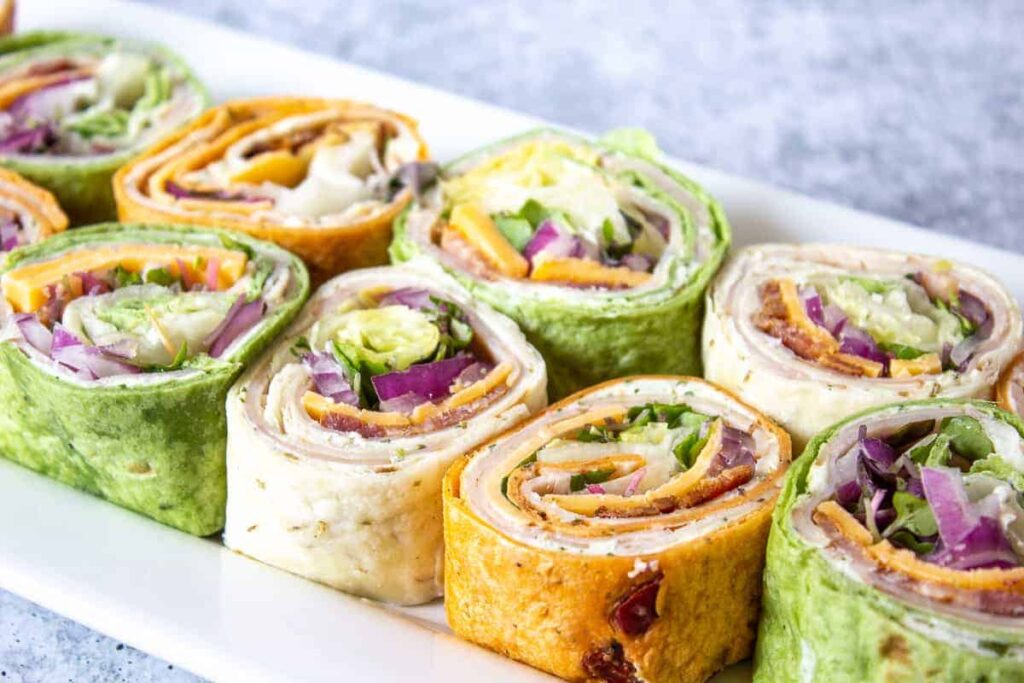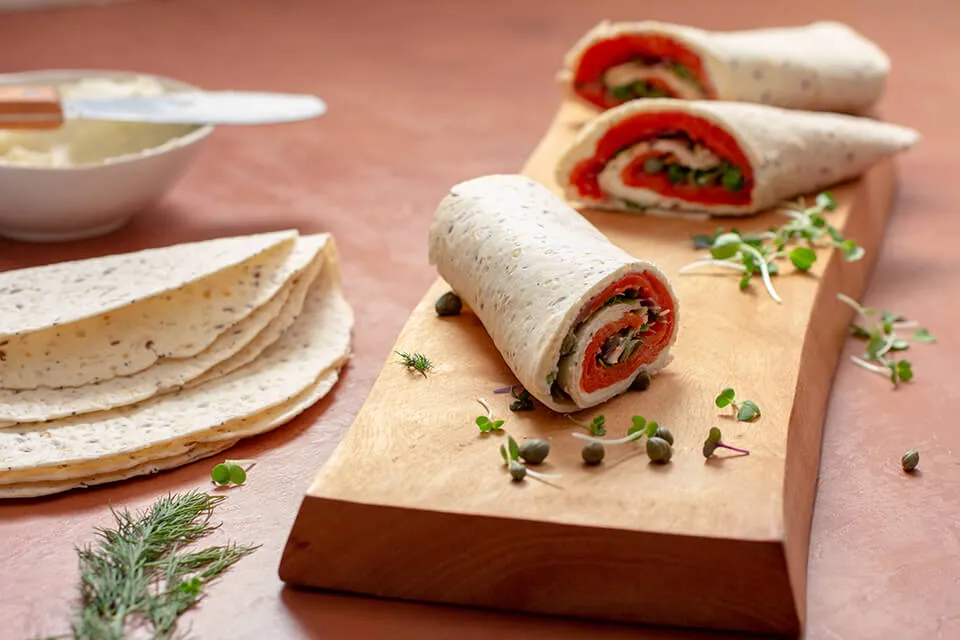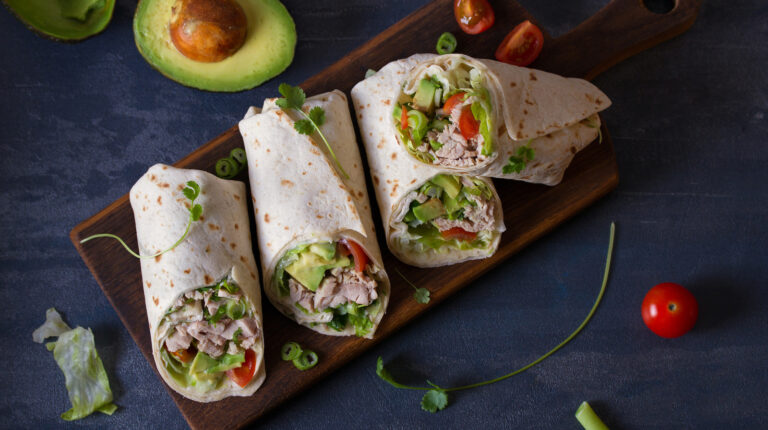As I stood in my kitchen one balmy afternoon, the aroma of freshly cooked chicken and warm tortillas filled the air. The sizzle of the skillet and the sight of melted cheese oozing from the edges of a perfectly grilled tortilla had my mouth watering. But then it hit me – on this scorching summer day, did I really want to consume something piping hot? That’s when the question crossed my mind: Can you eat tortilla wraps cold?
So, Yes, you can eat tortilla wraps cold. Most store-bought wraps are already pre-cooked, so they’re safe to eat without heating. However, warming them up can improve their texture and taste, which can be nice for certain fillings (cold cuts, cheese, vegetables). Whether you eat them cold or heat them is up to your preference and the flavors you want.
For further details let’s get started.
Signs of Spoilage in Flour Tortillas

Visible Mold: If you observe any mold growth on the tortillas’ surface, it is crucial to discard them immediately.
Off Odor: A noticeable off-putting smell emanating can signal spoilage and should be considered a warning sign.
Sticking Together: When they stick together or prove challenging to separate, this often indicates the presence of moisture or humidity, both of which can contribute to spoilage.
Discoloration: The presence of discoloration or dark spots on them can be a clear indicator of spoilage or exposure to light and heat, which can compromise their quality.
Brittle Texture: They that have become dry, brittle, or hard have likely been exposed to air for an extended period, resulting in the loss of moisture and a less appealing texture.
Mastering the Art of Warming Tortilla Wraps
Oven Elegance
The oven is your ally in the quest for perfectly heated wraps. When you have it prepped for other meal components, simply toss one or two wraps onto the racks or a pre-heated tray. A few minutes will suffice, ensuring they’re heated but still soft. For a larger batch of wraps, wrap them in foil to preserve moisture and place them in the oven at 200°C/392°F for around 8-10 minutes. Unwrap carefully and serve.
Microwave Magic
Furthermore, if speed is of the essence, the microwave comes to your rescue. Place the wraps on a microwave-safe plate or bowl, cover them with cling film, and zap them on high for 1-2 minutes, depending on your quantity. To add a touch of softness and create steam, lightly sprinkle or spray water before heating, but be cautious when opening due to the steam.
Sizzle on a Surface
Heat it directly on a hotplate, griddle, or pan for a tantalizing combination of color and softness. This method elevates it with a hint of browning while retaining their flexibility, ideal for accommodating hot fillings that burst with flavor.
Fireside Fiesta
By cooking your wraps over an open flame or barbecue, you may elevate them. Because of the additional taste this imparts, they go perfectly with your barbecued favorites like grilled chicken and charred veggies.
Grill-Top Greatness
If your oven has an integrated grill, don’t overlook its potential. Place it on a grill pan or tray and cook them on each side until they exhibit a gentle hue while remaining pliable enough for folding.
The Shelf Life of Uncooked Flour Tortillas Unveiled
Uncooked flour tortillas, those versatile culinary canvases, boast a reasonable shelf life when stored with care. Typically, they remain at their prime for several days to a week when safeguarded at room temperature within a sealed package or an airtight container.
However, heed this crucial advice: improper storage or exposure to air can strip them of their moisture, rendering them dry and brittle—a stark departure from the desired soft and supple texture that graces our taste buds.
Renowned American chef Samin Nosrat illuminates the importance of flour’s protein content, emphasizing its role in endowing dough with structure and elasticity.
Before indulging in these uncooked treasures, exercise due diligence by checking the package for its expiration date or use-by date. Alternatively, a keen eye and nose can detect telltale signs of spoilage, such as the unwelcome presence of mold or an unpleasant odor.
Preserving Uncooked Flour Tortillas: Refrigeration and Freezing Options
Indeed, uncooked flour tortillas can be safeguarded for later use through the art of refrigeration or freezing. Here’s how to do it right:
Refrigeration:
Embrace the cold embrace of the refrigerator by wrapping your uncooked flour tortillas in plastic or aluminum foil. For that extra layer of protection, nestle them within an airtight container. In this chilly haven, they can maintain their quality for a respectable span of 1 to 2 weeks.
Freezing:
For longer-term preservation, turn to the freezer. Swaddle your uncooked tortillas in plastic or aluminum foil, much like a precious treasure, and then tuck them into an airtight container. In this icy realm, they can withstand the test of time, up to 2 to 3 months.
Are There Health Concerns Associated With Consuming Uncooked Flour Tortillas?

Yes, Consuming uncooked flour tortillas presents potential health risks, primarily due to the presence of harmful bacteria like E. coli and Salmonella [2], which can lead to foodborne illnesses.
These bacteria may be present in wheat flour, a common ingredient in flour tortillas. While cooking tortillas at a high temperature can effectively eliminate bacteria, consuming them raw significantly raises the risk of foodborne illnesses.
Furthermore, the consumption of raw flour can result in additional health problems, including stomach discomfort, bloating, gas, and diarrhea.
It is essential to emphasize that consuming uncooked flour tortillas or other raw dough products is strongly discouraged. Cooking them at the appropriate temperature is always advisable to eliminate bacteria and ensure they are safe for consumption.
FAQs
How Do You Keep a Wrap Fresh for Lunch?
To keep a wrap fresh for lunch, consider using an oil-based condiment like mayonnaise to create a moisture barrier. Alternatively, incorporate a layer of lettuce or vegetables to separate the filling from the wrap. A thin layer of cream cheese works well too.
How Do You Package a Wrap for Lunch?
To package a wrap for lunch, fold the bottom edge of the tortilla wrap toward the center, tucking in any leftover fillings. Roll the wrap tightly, ensuring any spillage is tucked in. Finally, spread some sauce over the remaining portion of the tortilla wrap to seal it.
Can You Make Lunch Wraps the Night Before?
Yes, making wraps in advance is convenient for lunch preparations. Unlike sandwiches, wraps can be made a few days ahead and wrapped in plastic wrap to maintain freshness.
Are Wraps Served Hot or Cold?
Wraps are typically served cold, while burritos can be served either hot or cold, with their fillings wrapped in a tortilla, similar to wraps.
How Do You Store a Wrap for Lunch?
Storing a wrap for lunch can be done effectively by avoiding plastics like wrap, bags, or containers, as they don’t allow the sandwich to breathe. Moisture can get trapped and affect the sandwich’s quality.
How Do You Keep Lunch Wraps From Getting Soggy?
To prevent lunch wraps from becoming soggy, consider using a thin layer of oil-based spread (e.g., mayonnaise) between the fillings and the wrap. Control the amount of wet ingredients and stack the wrap carefully.
How Far in Advance Can You Make Wraps?
Wraps can be prepared up to 3-5 days in advance, depending on individual preferences and ingredients used. Proper storage is crucial for maintaining freshness.
Can You Make a Wrap the Day Before?
Yes, wraps can be made the day before and stored in the refrigerator. It’s recommended to wrap them tightly in plastic wrap, with each wrap having its individual wrap. They will remain fresh for up to 24 hours in the refrigerator.
How Long Do Premade Wraps Last?
Premade wraps can be wrapped tightly in plastic wrap or foil and stored in the refrigerator. They will stay fresh for up to 4 days.
How Do You Fold a Deli Wrap?
To fold a deli wrap effectively, try to limit the use of excessive wet ingredients, such as dressings or sauces, which can lead to sogginess. If not consumed immediately, wrapping it in foil can help maintain its shape.
Can a Wrap Be Kept Overnight?
Yes, Wraps can be stored overnight for consumption the next day, but their best quality is enjoyed when they are fresh. Proper storage is essential to preserve their freshness.
How Do You Make a Wrap That Doesn’t Get Soggy?
To prevent a wrap from becoming soggy, control moisture by using oil-based spreads and carefully managing wet ingredients. Proper stacking and wrapping are also important.
What is the difference between a burrito and a wrap?
A burrito is a Mexican dish made from Southwestern and Mexican ingredients rolled up in a tortilla. In contrast, a wrap is a tortilla filled with non-Mexican style ingredients.
How do you eat a wrap?
To enjoy a wrap, hold it like a candy bar, and peel the wrapper as you move down, allowing you to savor the whole meal with your hands.
Is a burrito served hot or cold?
A Mexican-style burrito is typically served hot or at room temperature.
How long do wraps stay good in the fridge?
Unopened tortilla packets can maintain quality for at least a week past the labeled date, possibly two to three weeks if stored in the fridge. Once opened, consume tortilla wraps within 5 to 7 days or freeze them for longer storage.
Final Word
The choice of whether to eat tortilla wraps cold or heat is a matter of personal preference cause they are pre-cooked and the type of filling you’re using. They are versatile, allowing you to enjoy them either way. Sometimes, the convenience of grabbing a cold wrap on a busy day is unbeatable.
On the other hand, heating it can enhance its texture and flavor, especially if you’re filling it with something warm and delicious. So, whether you go for the cool and refreshing bite or opt for a warm and savory experience, tortilla wraps are a delightful meal option that adapts to your taste and needs.

